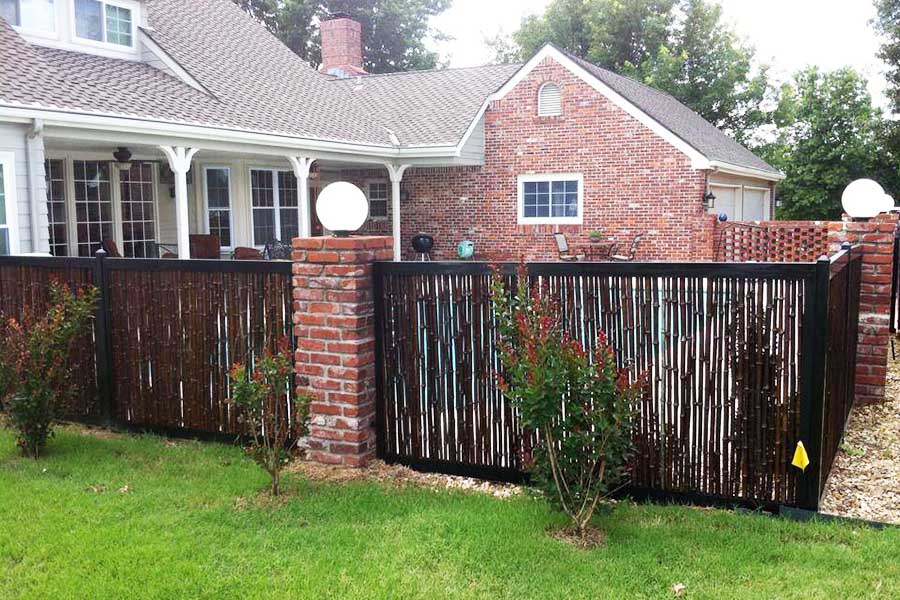All Categories
Featured

Whether it's strong winds, rain, snow, or extreme warm, climate problems can slowly damage your fence, leading to pricey repair work or substitute. There are numerous actions you can take to protect your fence from weather-related damages and prolong its life-span.
- Select the Right Material. The kind of product your fence is made from plays a considerable role in exactly how well it will withstand weather conditions. Some materials are normally a lot more resistant to damages than others. For instance:
Wooden Fencings: While timeless and beautiful, wood can be susceptible to dampness, rot, and bugs. Pressure-treated wood or cedar can offer better resistance to these concerns. Plastic Fences: Vinyl is highly resistant to dampness, rot, and insects. It additionally stands well to extreme sun and heavy rainfall. Metal Fences: Wrought iron or aluminum fences are resilient and can withstand a variety of weather. They can, however, struggle with corrosion with time, specifically otherwise effectively covered. Compound Fences: Made from a mix of wood fibers and plastic, composite fencings are extra immune to weather-related damage compared to typical timber fences. Selecting the best material for your region's environment is the initial step in safeguarding your fence from weather condition damage.
- Seal or Spot Wooden Fences. Wood fencings are especially vulnerable to damage from moisture, UV rays, and temperature variations. One of the most effective means to safeguard your wood fence is by using a protective sealer or discolor. These products aid:
Stop Water Damage: Sealers create a water-resistant obstacle, stopping dampness from leaking right into the timber and creating mildew, rot, or mold. Secure Versus UV Damages: An excellent discolor or sealer will certainly additionally obstruct unsafe UV rays from the sun, which can trigger timber to dry, fracture, and discolor over time. Maintain the Fencing's Look: Routine discoloration assists preserve the natural elegance of the timber and prolongs its life expectancy. It's recommended to reapply the stain or sealant every 1-- 2 years to maintain your fence great condition.
- Mount a Barrier for Wind Protection. Strong winds can create considerable damage to your fencing, specifically if it is tall or weak. Wind can bend or break wooden panels, loosen fencing posts, or perhaps create the entire fencing to collapse. Mounting a windbreak-- such as planting bushes, bushes, or setting up a mesh barrier-- can help shield your fence from high winds.
Additionally, you can reinforce the messages with concrete or metal dental braces to offer additional stability and prevent moving or leaning.
- Trim Overhanging Branches. Falling branches can break panels or damage the fencing messages, leading to expensive fixings. Maintaining the branches reduced back lowers the danger of branches breaking off and causing damages to the fence.
- Regular Assessments and Upkeep. Executing routine upkeep and evaluations is vital to capturing potential problems prior to they escalate. After a hefty storm, check your fencing for any kind of indicators of damages, such as loose panels, leaning posts, or busted sections. Dealing with little concerns before they become larger ones can help extend the life of your fence.
Additionally, cleansing your fence occasionally to get rid of dirt, mold, or particles can aid maintain its appearance and honesty. For wooden fencings, carefully pressure wash the surface to get rid of built-up gunk, and for vinyl fencings, use a moderate cleaning agent to clean any stains.

- Guarantee Correct Water Drainage. Water damage is among the most common weather-related issues that impact fences. Poor water drainage can result in standing water around your fence articles, which can create the blog posts to rot or weaken over time. To prevent this, ensure the ground around your fence inclines far from the messages. You might likewise wish to mount drain options such as French drains pipes or crushed rock at the base of the articles to stop water from merging.
- Use a Protective Coating to Metal Fences. Steel fences, such as those made of iron or steel, are highly sturdy but can be susceptible to rust otherwise correctly kept. Applying a protective layer or paint that is particularly created for metal can aid avoid rust and deterioration. Make sure to examine the fencing periodically for any kind of indicators of rust, and address it immediately by fining sand and painting the affected areas.

Conclusion. Your fencing is a valuable investment, and protecting it from weather-related damages will certainly assist make certain that it remains to serve its objective for many years ahead. By picking the ideal products, regularly preserving your fence, and taking steps to shield it from the elements, you can reduce weather-related damage and prolong its life expectancy. Whether you're taking care of solid winds, hefty rainfall, or the harsh sun, these easy actions can go a lengthy means in maintaining the problem and look of your fencing, saving you time and cash in the future.
Latest Posts
Find Top Car Repair Care offered by Montclare Auto Repair – Drive with Confidence
Published May 24, 25
1 min read
Uncover Montclare Auto Repair’s Premier Auto Repairs and Why Drivers Trust Them
Published May 21, 25
1 min read
Discover the Greatest Auto Repair Deals in Montclare, Chicago
Published May 20, 25
1 min read
More
Latest Posts
Find Top Car Repair Care offered by Montclare Auto Repair – Drive with Confidence
Published May 24, 25
1 min read
Uncover Montclare Auto Repair’s Premier Auto Repairs and Why Drivers Trust Them
Published May 21, 25
1 min read
Discover the Greatest Auto Repair Deals in Montclare, Chicago
Published May 20, 25
1 min read